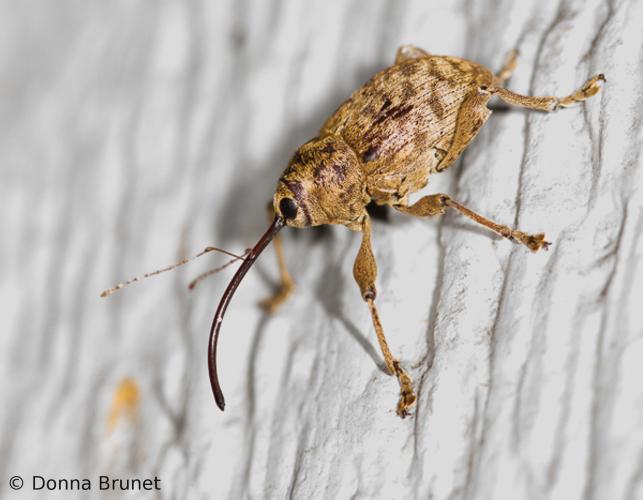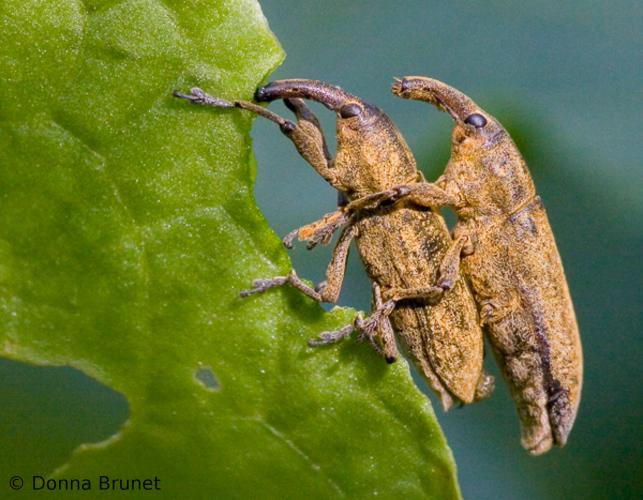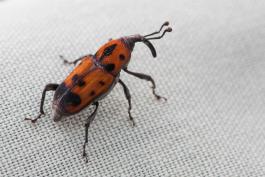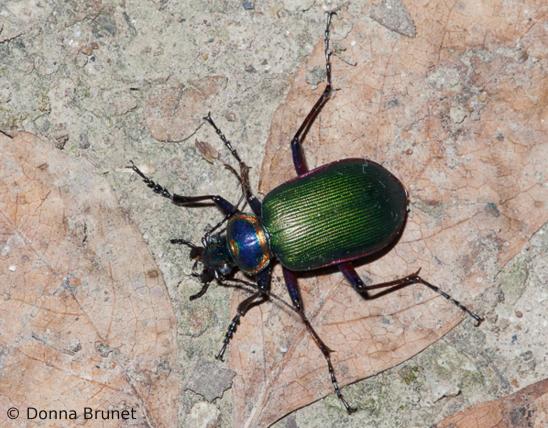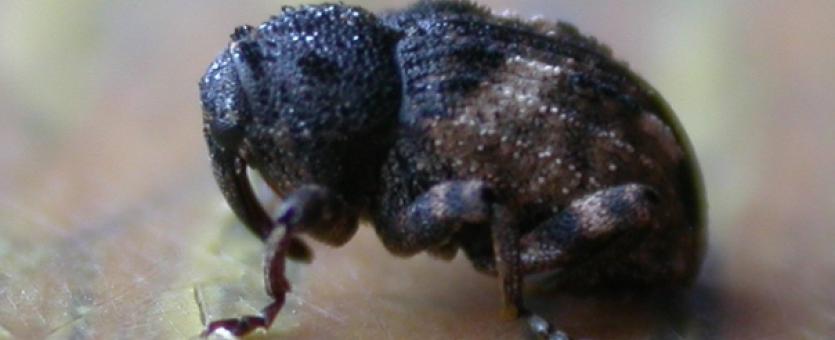
Weevils are plant-eating beetles with a characteristic long, down-curving snout. The antennae have small clubs and are elbowed. The first segment of the antennae usually fits into a special groove on the side of the snout. When disturbed, weevils often play dead (tuck in their legs and lie motionless on their backs). There are thousands of weevil species; this is one of the largest families of insects.
The larvae are usually pale and grublike and are found inside nuts, fruits, or other plant parts.
Length: most are ¼ to ½ inch (varies with species).

Statewide.
Habitat and Conservation
Weevils are nearly all plant feeders and are usually found on or near the particular types of plants they feed on. Several weevil species can only live on a certain type of plant, and each targets a certain part of the plant. Many, like the cotton boll weevil and plum curculio, are serious agricultural pests. The larvae typically develop inside a nut, seed, stem, or other part of a plant, feeding as they grow, before pupating and emerging as adults.
Food
Weevils are plant eaters. Some chew holes in fruits or nuts; others, such as maize billbugs, chew into stems, or eat leaves, roots, and so on. The larvae eat plants from the inside out, as each develops inside a chamber it creates within the food plant. The larvae of some species eat out the centers of developing thistle or sunflower heads.
Status
Common. Economically important for the damage they cause to vegetable, grain, orchard, cotton, and other crops, as well as to ornamental and landscaping plants. Other species are pests of stored foods, especially nuts and grains.
Life Cycle
Adult female weevils typically chew into a nut, fruit, or other plant part and lay an egg within. The grublike larva hatches and eats the interior of the acorn, fruit, or cotton boll (or whatever its particular food is), then pupates, chewing its way out of the nut or fruit as an adult beetle.
Human Connections
Weevils cause millions of dollars of damage agriculturally. The cotton boll weevil and maize billbugs are well-known pests. Alfalfa weevils damage prime hay crops. All types of stored grain can be damaged by wheat or granary weevils. Other weevils feed on roots.
Ecosystem Connections
Along with a host of other herbivorous animals, weevils convert plant nutrients into animal tissue — that of their own bodies. They then become nutritious food for any animals that eat them, such as insect-eating birds, or herbivores that eat the fruits, nuts, and vegetation in which the larvae dwell.


